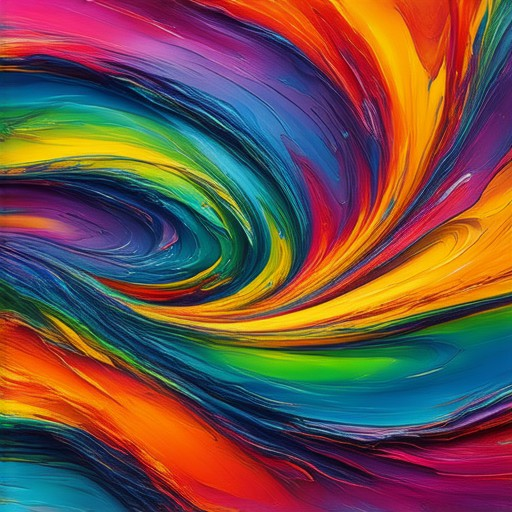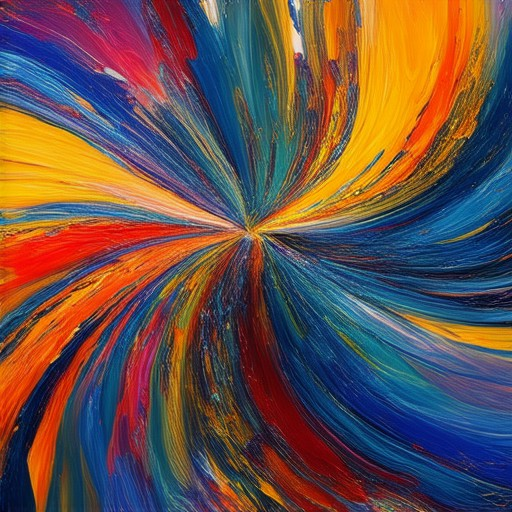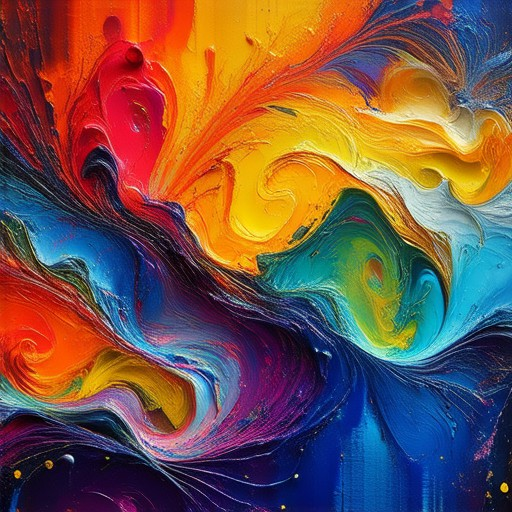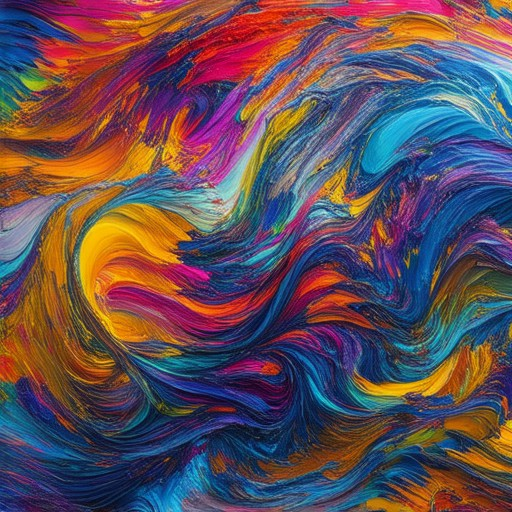Engaging in creative art projects offers a unique way to express individuality and foster innovation, making it a valuable tool for students and educators alike. Whether you’re an aspiring artist or a seasoned teacher, discovering the right creative art resources can transform your approach to artmaking. This guide delves into essential tools, techniques, and strategies to help you unlock your creative potential, explore diverse mediums, and discover cost-effective solutions for art supplies. From leveraging free digital tools to utilizing community centers, this comprehensive resource covers everything you need to inspire and enhance your artistic journey. By mastering the principles of composition, collaboration, and time management, you can create meaningful works that stand out. Let’s embark on a journey to unlock the world of creative art resources and elevate your artistic practice.
Key Takeaways
– Master the 1/3 Rule: Create balanced and visually appealing compositions by positioning your subject one-third from each edge of the frame or canvas, avoiding central placement.
– Apply the 60/40 Rule: Ensure your artwork commands attention by occupying 60% of the wall space, leaving 40% for open space to enhance visual balance and reduce clutter.
– Harness the Golden Triangle: Infuse your art with timeless aesthetics by incorporating the golden ratio, influencing modern and contemporary styles while evoking harmony and emotional resonance.

What Are the 4 Cs of Art?
The 4 Cs of art are essential principles that guide artistic creation and expression. These elements work together to create meaningful and impactful artwork. Here’s a breakdown of each component:
Creativity
Creativity is the foundation of art. It involves thinking outside the box, exploring unique ideas, and bringing imagination to life. Artists use creativity to develop innovative concepts and approaches. Without creativity, art would lack originality and depth. We encourage artists to embrace their individuality and experiment freely.
Composition
Composition refers to the arrangement of elements within a work of art. It involves selecting subject matter, choosing colors, and organizing shapes to create balance and harmony. A strong composition captures the viewer’s attention and conveys the artist’s vision effectively. Mastering composition takes practice and an eye for detail.
Craftsmanship
Craftsmanship is the technical skill and precision required to execute an artistic idea. It involves the use of tools, materials, and techniques to bring a concept to reality. High craftsmanship ensures that the finished piece is polished, durable, and visually appealing. This element ensures that the artwork meets both aesthetic and functional standards.
Concept
Concept is the underlying idea or theme of the artwork. It determines the direction of the piece and gives it emotional resonance. A solid concept connects the artwork to broader themes, such as nature, society, or personal experiences. Conceptual art often provokes thought and challenges viewers to reflect on deeper issues.
By mastering these four elements, artists can create work that is not only visually stunning but also deeply meaningful. At Artfull Journey, we celebrate the journey of artistic creation and believe that every artist deserves recognition for their unique contributions to the field. Explore our resources and articles to discover tips, techniques, and inspiration for your next project.
What Are the 7 Essentials of Art?
The seven essential elements of art are fundamental concepts that every artist uses to create visually appealing and meaningful artwork. Understanding these elements is crucial for anyone looking to master the art of creating.
- Line : Lines are the basic tools of art. They can be straight or curved and are used to define shapes, create movement, and establish boundaries. Lines can be thick or thin, long or short, and can be placed horizontally, vertically, diagonally, or in any orientation.
- Shape : Shapes are the containers that hold form and space. They can be geometric (like squares, circles, triangles) or organic (like waves, curves, or blobs). Shapes are created by lines and give artwork its structure.
- Space : Space is the area around and between objects. It can be negative (empty space) or positive (the actual object or subject matter). Effective use of space creates balance and harmony in a composition.
- Value : Value refers to the lightness or darkness of colors. It creates contrast and helps guide the viewer’s eye through the artwork. High value (light) can draw attention, while low value (dark) can recede.
- Form : Form is three-dimensional shape. It gives objects their volume and depth, making them appear real or abstract depending on the artist’s intent.
- Texture : Texture describes the surface quality of an object or material. It can be smooth, rough, soft, hard, flat, or woven. Texture adds interest and realism to artwork.
- Color : Color is the element that adds emotion, mood, and vibrancy to art. It can be warm or cool, bright or muted, and plays a significant role in how the viewer interprets the artwork.
By mastering these elements, artists can communicate ideas, tell stories, and evoke emotions through their work. To explore these concepts further, visit our Art Elements Guide for detailed explanations and examples.

How to Get Free Art Supplies
Obtaining free art supplies can be a great way to enhance your creative projects without spending much. Here are some effective methods:
- Check Local Stores: Visit art supply stores or shops. They often display samples or have leftover materials that they may be willing to give away.
- Online Communities: Join online forums or groups dedicated to artists. Platforms like Reddit or Facebook often have active communities where members share resources and tips.
- Freecycle: Utilize websites like Freecycle.org to find locals offering free art supplies. Many artists and hobbyists may have items they no longer need.
- Local Classes: Attend art classes or workshops. Some educational institutions or community centers offer free materials as part of their programs.
- Follow Artists Online: Engage with artists on social media platforms. Many share their creations and often provide free supplies as part of their projects.
- Art Challenges: Participate in online art challenges. These events frequently attract sponsors who provide free art supplies to participants.
Remember to visit our free art supplies page for more resources and opportunities!

The 1/3 Rule in Art
The 1/3 rule, also known as the rule of thirds, is a fundamental principle used in various forms of art and photography to create balanced and visually appealing compositions. This guideline suggests that the subject matter or primary focus of the artwork should be positioned one-third of the way from each edge of the frame or canvas. While this does not mean the subject should be centered, it encourages a dynamic balance within the piece.
Here’s a breakdown of the rule:
- One-third rule: Place the main subject or focal point one-third of the way from either side of the frame or canvas.
- Two-thirds rule: Position complementary elements, such as background interest or additional subjects, two-thirds of the way from the edges.
- Avoid equal halves: Steer clear of placing the subject exactly in the middle or equally dividing the space, as this often creates a less engaging composition.
This rule is particularly useful in:
- Painting: Artists often use this technique to guide the viewer’s eye to the main subject while still allowing for a balanced and interesting layout.
- Photography: Photographers apply the rule to frame shots in ways that highlight their subjects effectively.
- Design: Graphic designers use it to create visually appealing layouts for posters, websites, and other media.
While the rule of thirds is a helpful guideline, it’s important to remember that it’s not a strict rule. Sometimes, breaking the rule can create unique and innovative compositions that capture the artist’s vision perfectly.
The 60/40 Rule in Art
The 60/40 rule in art refers to a guideline for arranging artwork on a wall, suggesting that approximately 60% of the wall space should be dedicated to the artwork, while the remaining 40% should be left as open space. However, this rule is often debated and varies depending on the context and personal preferences.
Here’s a breakdown of the key aspects:
- 60% for the artwork: This means the piece should take up most of the wall space, allowing it to stand out and create a focal point.
- 40% for open space: This leaves enough room for your eye to rest and makes the space feel less crowded.
While this ratio is often cited, many artists and decorators argue that the proportion can vary based on the size of the artwork, the style of the room, and the overall aesthetic you’re aiming for. Some prefer a more balanced arrangement, while others emphasize giving the artwork more prominence.
For example:
- A large abstract painting might require more space to be appreciated fully, adhering closer to the 60/40 rule.
- Smaller pieces or decorative artwork might benefit from a more balanced layout, with equal emphasis on the artwork and surrounding space.
To apply this rule effectively, consider the following tips:
- Measure the wall space beforehand to determine the ideal placement.
- Choose frames or mats that complement the artwork and contribute to the overall composition.
- Consider the lighting in the room, as it can affect how the artwork appears.
Remember, the 60/40 rule is a flexible guideline and should be adapted to suit your personal style and the specific characteristics of your space. Experiment with different configurations to find what works best for you!

The Golden Triangle in Art
The golden triangle is a concept deeply rooted in art history and continues to influence contemporary artistic movements. Here’s a breakdown of its significance:
- Definition and Historical Context: The golden triangle refers to works of art that incorporate the golden ratio (approximately 1.618), a mathematical concept historically significant in ancient cultures like the Egyptians and Greeks. This ratio is often seen in architectural masterpieces like the Parthenon and remains a cornerstone in artistic compositions.
- Modern Art Movements: In the 20th century, abstract expressionist painters such as Jackson Pollock and Mark Rothko employed geometric shapes and proportions inspired by the golden ratio. Their works often evoked emotional and spiritual responses, aligning with the harmonious beauty of the golden triangle.
- Contemporary Applications: Today, digital artists and installations frequently use geometric patterns and fractals derived from the golden ratio. These pieces often explore the intersection of mathematics and art, creating visually stunning yet thought-provoking works.
- Aesthetic Impact: The golden triangle’s proportional properties contribute to a sense of balance and harmony in art. This appeal makes it a favorite subject for artists aiming to create visually pleasing and universally resonant compositions.
Exploring the golden triangle allows artists to tap into timeless aesthetic principles, ensuring their work continues to captivate audiences across generations.




0 Comments